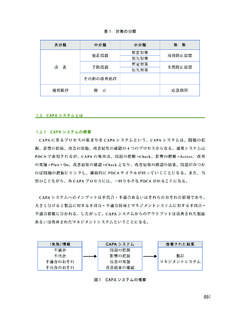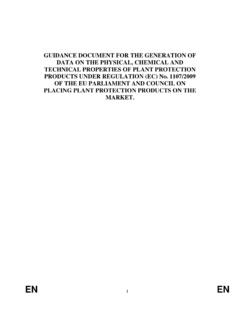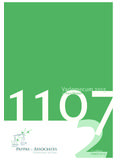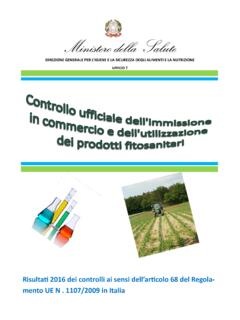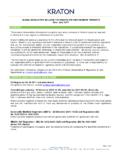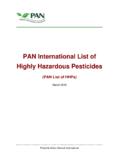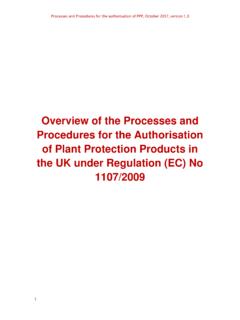Transcription of CLP 規則の改訂 追加 FAQ (2016 年2 月 - …
1 CLP / FAQ (2016 2 ). 2016 2 9 . Unique ID . CLP. A new Regulation [159] CLP 3. Annex VI to CLP. [258] CLP 4. [262] 3 . 4. Classification [1152] ( ) . 6. Hazard communication with means other than labelling [271] SDS CLP 7. Labelling [241] CLP 8. [246] EU CLP 9. Notification-Classification & Labelling (C&L) Inventory [209] 2018 REACH C&L 10. [229] CLP 11. [253] 12. Scope and exemptions under CLP. [176] 67/548/EEC (NONS) CLP . C&L 13. 1. (2016 CLP FAQ ). FAQ (Version ). FAQ Version FAQ ID . FAQ ID . 2016 2 2 [159] [176] [209] [229] [253] [241] [246] [258] [262] [271]. FAQ (Version ) FAQ . 2016 2 4 [1152]. 2015 10 14 HP CLP FAQ [1138] . / / .. ( FAQ Q&A ). 2012 11 30 ECHA Q&A website REACH CLP . (ePIC R4BP3 ) Q&A FAQ . HP . ) 1. ECHA FAQ/Q&A (REACH CLP . ) 2012 11 30 / FAQ/Q&A . 2012 11 30 2013 1 8 2013 4 12 FAQ . 2014 9 12 HP FAQ.. (New Unique ID) 2012 11 30 ECHA Q&A website . REACH CLP (BPR) Q&A FAQ . HP . 43, 44, 55, 105, 116, 129, 130, 144 148, 154, 155, 166, 222, 249 252, 258, 262, 270, 274, 475.
2 497, 748, 787, 804, 805, 819 850, 898 916(901, 907 ), 918 925, 935 961, 978 998, 1003 1039, 1049 1053, 1057 1099(1084, 1090 ), 1109 1113, 1122 1136. (1131 ). 2. ( ). [159] What is CLP? "CLP" or "the CLP Regulation" is Regulation (EC) No 1272/2008 on classification, labelling and packaging of substances and mixtures, amending and repealing Directives 67/548/EEC and 1999/45/EC, and amending Regulation (EC) No 1907/2006 (REACH). It implements the United Nations Globally Harmonised System of classification and labelling of chemicals (GHS) into EU. law: Regulation (EC) No 1272/2008 (CLP): Regulation (EC) No 1907/2006 (REACH): The CLP Regulation came into force on 20 January 2009. It fully replaced the Dangerous Substances Directive 67/548/EEC (DSD) and the Dangerous Preparations Directive 1999/45/EC (DPD) from 1. June 2015. CLP. A new Regulation Version Latest update 02/02/2016. ( ). [159] CLP . CLP CLP 67/548/EEC 1999/45/EC . (EC)No1907/2006(REACH).
3 (EC) No 1272/2008 EU . (GHS) . (EC) No 1272/2008 (CLP): (EC) No 1907/2006 (REACH): 3. CLP 2009 1 20 2015 6 1 . 67/548/EEC (DSD) 1999/45/EC (DPD) . ( ). [258] Where can I find the updated version of Table of Annex VI to CLP? Adaptations to Technical Progress (ATPs) to the CLP Regulation are issued by the European Commission and provide all updates to the harmonised classification and labelling in Table of Annex VI to CLP. Updated versions of Table are included in the Classification and Labelling Inventory managed by ECHA. However, please be aware that there can be a time delay of up to several months between the publication of changes/additions to Table in the Official Journal of the European Union and the change to the C&L Inventory ( database). CLP. Annex VI to CLP. Version Latest update 02/02/2016. ( ). [258] CLP . CLP (ATP) CLP .. ECHA . / . C&L . ( ) . ( ). [262] Can a manufacturer, importer or downstream user submit to the Agency a proposal to introduce additional harmonised classification and labelling elements to an existing entry in Part 3 of 4.
4 Annex VI? Yes. A manufacturer, importer or downstream user can submit a proposal to introduce additional harmonised classification and labelling elements to an entry in Part 3 of Annex VI to CLP directly to the Agency. A condition for submitting such a proposal is that the additional harmonised classification and labelling elements concern a hazard class or differentiation not yet covered by the harmonised classification of the substance in Part 3 of Annex VI. The procedure is described in Article 37(2) of CLP. Where a change to the existing harmonised classification and labelling elements of a substance in Part 3 of Annex VI to CLP is proposed, the manufacturer, importer or downstream user must submit the proposal to a competent authority of a Member State in which the substance is placed on the market (Article 37(6)). When a manufacturer, importer or downstream user has new information which may lead to a change of the existing harmonised classification and labelling of substances regulated under the Biocidal Products Regulation (EU) 528/2012 (the BPR) or under Regulation (EC) No 1107/2009 on plant protection products (the PPPR), they must act according to Article 37(6) CLP.
5 As harmonised classifications in Annex VI are binding for the endpoints covered in the entry (except the minimum classifications (section in Annex VI to CLP) indicated by the reference * in Table ), it is not possible to use a different classification and labelling from a harmonised one until an ATP amending it has been published. CLP. Annex VI to CLP. Version Latest update 02/02/2016. ( ). [262] 3 .. CLP . 3 .. 3 . 5.. CLP 3 .. ( 37 (6)) . (EU)528/2012(the BPR) . (EC)No 1107/2009(the PPPR) .. CLP 37 (6) .. * . (CLP ) ) ATP .. ( ). [1152] Can the bridging principle "Review of the classification where the composition of a mixture has changed" be applied where the identity of the hazardous constituents (ingredients) of a mixture change? No, the bridging principle "Review of classification where the composition of a mixture has changed" can only be used for mixtures containing the same constituents (ingredients). It is only the concentrations of the constituents (ingredients) and not the constituents themselves that are permitted to change, within the ranges specified in Table in Part 1 of Annex I which applies Article 15(2)(a).
6 CLP. Classification Version: Latest update: 04/02/2016. ( ). [1152] . ( ) .. 6. ( ) 15 (2)(a) . 1 . ( ) . ( ). [271] When does a supplier have to introduce the CLP classifications into the safety data sheet (SDS) for substances and mixtures? Suppliers had to introduce CLP classifications into the safety data sheet (SDS) for substances from 1. December 2010 and for mixtures from 1 June 2015. However, mixtures already placed on the market before 1 June 2015 and classified, labelled and packaged according to the Dangerous Products Directive (DPD) do not need to be re-labelled or re-packaged according to CLP before 1 June 2017. Their SDSs also do not need to be aligned with the CLP classification until 1 June 2017. In conformity with Article 2 of Regulation (EU) 2015/830, without prejudice to Article 31(9) of REACH, the SDS for mixtures provided to any recipient at least once before 1 June 2015 may continue to be used and need not comply with the Annex to Regulation (EU) 2015/830 until 1 June 2017.
7 For both substances and mixtures, Annex II to REACH was replaced by the Annex to Regulation (EU) 2015/830 from 1 June 2015. CLP. Hazard communication with means other than labelling Version: Latest update: 02/02/2016. ( ). [271] SDS CLP .. CLP 2010 12 1 SDS 2015 . 6 1 SDS 2015 6 . 1 (DPD) . 2017 6 1 CLP . SDS 2017 6 1 CLP . (EU)2015/830 2 REACH 31 (9) 2015. 6 1 SDS . 7. 2017 6 1 (EU) 2015/830 . REACH 2015 6 1 . (EU) 2015/830 . ( ). [241] Do active substances, plant protection products and biocidal products have to be labelled in accordance with CLP? Yes, they do. Active substances, plant protection products within the scope of Regulation (EC) No 1107/2009 or biocidal products within the scope of Regulation (EU) 528/2012, which are classified as hazardous, must bear a CLP label including the relevant hazard statements, precautionary statements, signal word and pictograms. In addition, the label of a hazardous plant protection product must also display the statement EUH401 ("To avoid risks to human health and the environment, comply with the instructions for use").
8 However, in relation to any other aspects of labelling, the provisions of the respective regulations apply, for the update of a label of a plant protection or biocidal product, see CLP. Articles 15(5) and 30(3). Further information can be found in the Guidance on labelling and packaging in accordance with the CLP Regulation available on the ECHA website at Note that an active substance can also be placed on the market for non-pesticidal or non-biocidal uses. In these cases, the labelling provisions set out in CLP Title III apply in full. This means, for example, that the update of the relevant label has to follow the provisions of CLP Article 30(1). and (2). CLP. Labelling Version Latest update 02/02/2016. ( ). [241] CLP .. (EC) No 1107/2009 (EU) 528/2012 . 8. CLP.. EUH401( . ) .. CLP 15 (5) . 30 (3) ECHA website CLP .. CLP . CLP 30 (1) (2) .. ( ). [246] If a substance or mixture is produced exclusively for the non-EU market, does it need to be labelled in accordance with CLP before export?
9 The CLP Regulation does not require the labelling of substances or mixtures that are only exported and that, within the EU, are only subject to transport operations. It is necessary to take worker health and safety considerations into account during the production packaging and storage stages, to ensure that these substances and mixtures are handled safely. However, the PIC Regulation ((EU) 649/2012) concerning the export and import of hazardous chemicals (which implements the Rotterdam Convention within the EU) requires that all exported chemicals are classified, labelled and packaged in accordance with the CLP Regulation, the Plant Protection Products Regulation ((EC) No 1107/20), the Biocidal Products Regulation ((EU) No 528/2012) or any other relevant EU legislation, unless those provisions would conflict with any specific requirements of the receiving countries. Further information can be found in sections and of the Guidance for implementation of the PIC Regulation.
10 The labelling and packaging requirements for hazardous transported goods are laid down in the respective transport legislation, based on the UN Model Regulations. 9. CLP. Labelling Version Latest update 02/02/2016. ( ). [246] EU . CLP . CLP EU .. PIC ((EU) 649/2012)( EU . ) CLP . ((EC) No 1107/20) ((EU) No 528/2012) . EU PIC .. UN .. ( ). [209] For substances with REACH registration deadlines in 2018, is it necessary to notify a substance to the C&L Inventory before the registration deadline? Yes, it is. Notification is independent from the REACH registration deadlines. A substance, either on its own or contained in a mixture, must be notified to the C&L Inventory within one month of the first time the company is placing it on the market. Notification can be done using any of the notification tools available at: tools/reach-it/notification-to-the-cl-in ventory CLP. Notification-Classification & Labelling (C&L) Inventory Version Latest update 02/02/2016.


